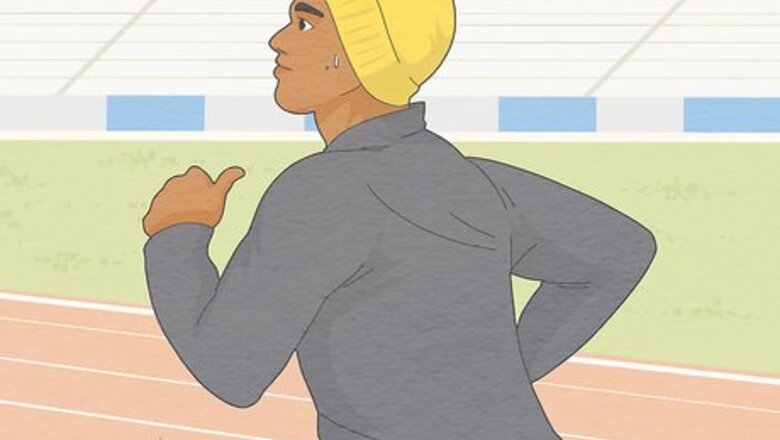
views
- The most effective weight loss method is cutting calories and increasing exercise, but break down your fitness goals into smaller ones so you don’t experience burnout.
- Aim to burn 2000 calories over several days or weeks. The best calorie-burning exercises include HIIT, cycling, and Zumba.
- To figure out how many calories you need to cut, use an online calculator, or talk to your doctor to develop an effective health plan.
- You naturally burn 2000 calories a day through everyday activities, but don’t attempt to burn an additional 2000 calories strictly through exercise–it’s unsafe and exhausting.
- Fitness trackers and machines can often be inaccurate when calculating metrics. Instead of focusing on the numbers, consider focusing on how you feel. Using Rate of Perceived Exertion can help you gauge the intensity of a workout and check in to your body. Also, focusing on the feeling post-workout (ie. less stressed, more energized, more focused) will improve your relationship with fitness and consistency in the future.
Can you burn 2000 calories in a day?

If you're moderately active, you already burn 2000 calories a day. Everyday activities like breathing, walking, and sleeping contribute to calorie loss, but diet, exercise, and genetics (metabolism) determine long-term weight loss. To lose weight, you need to use more calories than you consume by cutting calories, increasing exercise, or both. Before cutting calories, talk to your doctor and a reputable fitness coach. Never eat fewer than 1200 calories a day. It's extremely dangerous and can lead to future health problems. Burning an extra 2000 calories (on top of the 2000 calories you normally burn) isn’t easy or advisable. Unless you’re a professional athlete, don’t attempt to burn an additional 2000 calories strictly through exercise. For effective weight loss, aim to burn an additional 2000 calories over several days or weeks, and break down your fitness goals into smaller, manageable ones so you don’t experience burnout.
Calorie-Burning Exercises
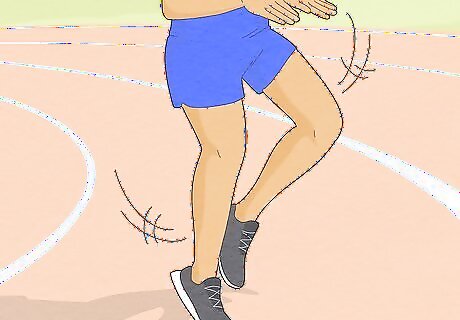
HIIT (High-Intensity Interval Training) HIIT involves several minutes of high-intensity activity followed by short periods of low-intensity activity or rest. It's an ideal home workout because it doesn’t require much space or additional equipment. In just 30 minutes, you can burn over 300 calories, so grab your workout timer and get ready to sweat! When adding HIIT to your routine, be sure to warm up before exercising. Start with 10-15 leg swings, or jog in place for one minute. Try 30 seconds of push-ups for beginners, followed by a 15-second plank. Or, run up and down the stairs for 1 minute, followed by 25 seconds of rest. Do 8-10 reps. Instead of a timer, blast music over a speaker to keep track of your workout intervals. Try sprinting until you reach the bridge of your favorite song, then slowly walk in place until the outro (and repeat).
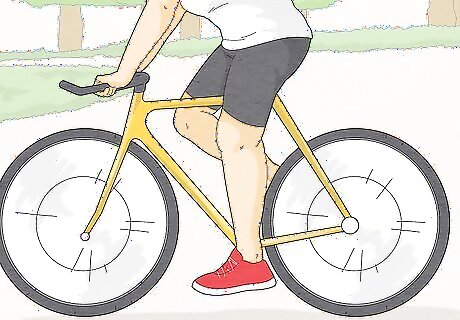
Cycling Whether you take a ride outside your neighborhood or opt for an indoor experience, cycling is a fun and healthy form of cardio. It’s the perfect exercise to lose weight because it burns body fat and builds muscle, boosting metabolism. You can expect to burn around 315-440 calories in 30 minutes. If you’re a beginner, it’s crucial to choose the right bike to avoid lower back pain. Search for an indoor recumbent bike, which puts you in a slightly reclined position to put less stress on your body. When cycling outdoors, always wear a safety helmet, and avoid wearing clips to keep your feet on the pedals–your injuries will be worse if you fall off your bike. It’s crucial to monitor your hydration levels when exercising: drink at least 2 litres (0.53 US gal) to 3 litres (0.79 US gal) of water a day, and add electrolyte powder to your water if you ride for over an hour.
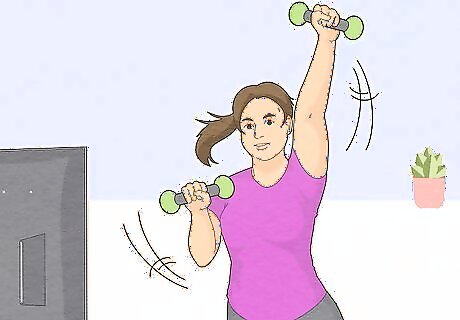
Zumba Zumba is an exciting dance fitness class that combines cardio with strength training moves. Unlike other exercise classes, Zumba is highly social and interactive: don’t expect an instructor to tell you what to do. Dancing to upbeat Latin music helps melt all your stress away and tone your entire body, and you can expect to burn 300-800 calories in a one-hour class. It’s important to find the right Zumba for you. Search for a class with a licensed instructor on Zumba.com, or try it at home: there’s tons of videos on YouTube that are guaranteed to make you sweat. To burn even more calories, try holding a set of Zumba dumbbells during class.
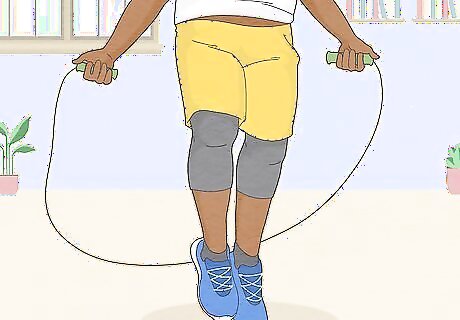
Jumping Rope Jumping rope isn’t just for kids: it’s an intense cardio workout that tones your muscles and elevates your heart rate. In 30 minutes, you can expect to burn 300-450 calories, but jumping at a high intensity burns even more. Plastic jump ropes whip around faster, helping you create a more intense workout. Jump on a wooden or waxed floor to prevent putting stress on your knees. To keep your routine exciting, do variations like alternate foot jumps or single leg lift jumps. Start by jumping rope for 2-3 minutes so you can focus on the quality of your jumps, then increase the duration and intensity as you progress. To target all your muscle groups, combine jumping rope with other training exercises, like cardio, cycling, or HIIT.
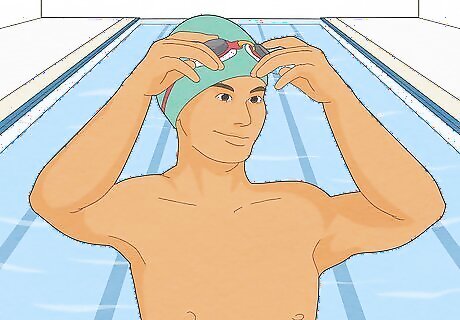
Swimming If you don’t want to sweat, swimming is an excellent option for both physical and mental health benefits. Swimming works your entire body, building muscles, endurance, and core strength. Incorporate different strokes (freestyle, backstroke, breaststroke) to increase the intensity of your workout and burn more calories. If you swim laps, you can expect to burn 300-420 calories in 30 minutes. If you’re swimming laps, put on a swim cap to keep your hair out of your face and wear swim goggles to protect your eyes underwater. Whether it’s a pool, lake, or beach, ensure the environment you choose to swim in is safe. Always swim under supervision or with a friend, and stay within a depth you can handle.
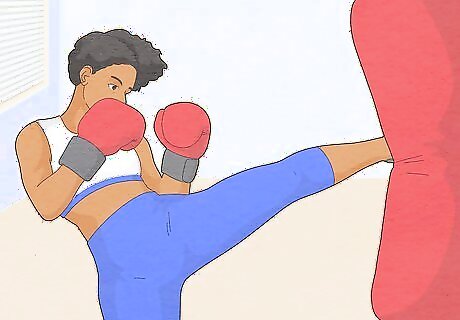
Kickboxing Kickboxing is a high-energy workout that combines intense cardio and strength training. It involves various punching and kicking techniques, so it’s an efficient workout to learn the basics of self-defense. Like swimming, kickboxing is a full-body workout to help tone your muscles and burn fat, and you can expect to burn 300-420 calories in 30 minutes. To get the most out of sparring, add wrist or ankle weights during your kickboxing workout, or throw on a pair of boxing gloves for extra resistance. Improve your kickboxing skills by building your endurance with other exercises: try jumping rope, sprinting up hills, and swimming laps.
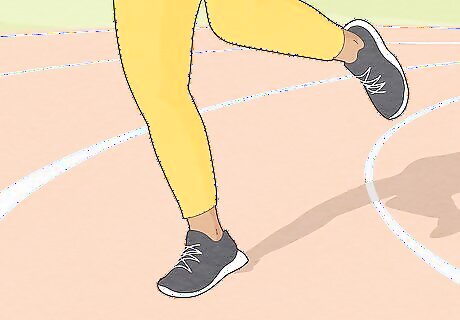
Running Running is the most classic form of cardio to help you lose weight quickly. It’s incredibly accessible because it doesn’t involve equipment, and it’s easy to incorporate into your schedule. In just 30 minutes, you can burn 200-500 calories, depending on the intensity of your run. Mix running with other workouts to meet your fitness goals: try a warm-up (15 minutes) + running (1 hour) + cool down (15 minutes) + HIIT (15 minutes) + jumping rope (10 minutes). If you struggle with working out consistently, run with a friend, or join a local running club. It’s crucial to choose running shoes that fit your needs. Consider the surface you’re running on, and purchase your shoes in-person to ensure they’re the perfect fit.

Weight Training Also known as resistance training, weight training builds strength by working muscles to overcome a resistance force. It includes lifting weights, using resistance bands, and performing squats, and it’s an integral workout to boost your metabolism: as you gain muscle, your body burns more calories at rest. In 30 minutes, you can expect to burn 180-250 calories. Work with a fitness instructor to develop a safe and effective program. A beginner’s routine typically involves 8-10 exercises (8 reps each), 2-3 times per week. When starting your weight training program, it’s crucial to warm up with some cardio. Start by walking for 5 minutes, followed by a few jumping jacks and dynamic stretches. To gain the most benefits, introduce new exercises into your workout routine to challenge your muscles.
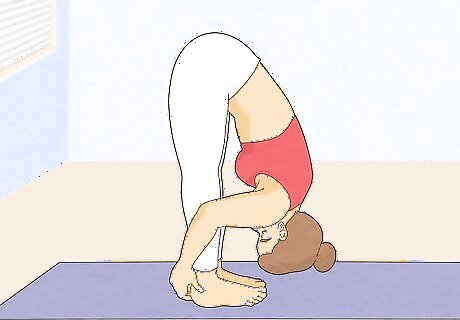
Low-intensity Aerobic Exercises (Yoga, Pilates) Intense workouts can be extremely intimidating (and draining), so incorporate low-intensity aerobic exercises to swing you into shape. Yoga and pilates involve breathing, meditation, and movement to improve posture and balance. They're great recovery exercises to pair with HIIT or running, and you usually burn 165-230 calories per hour. Incorporate low-intensity aerobic exercise with other workouts to burn more fat: try a warm up (15 minutes) + pilates (1 hour) + swimming (30 minutes) + cycling (15 min) + cool down (15 minutes). When choosing a type of yoga, it’s important to try different classes to see what you enjoy. Bikram yoga (hot yoga) and Vinyasa yoga are the best forms of yoga for burning calories.
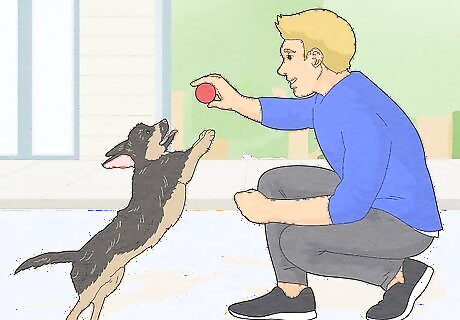
Other Daily Exercises There are plenty of opportunities to exercise throughout the day, whether it’s cleaning your room or playing with your dog. If you work in an office environment, avoid sitting down for too long and take breaks to move around. Park further from the store entrance, and take the stairs instead of the elevator. See your colleagues in-person instead of sending an email. Wash the dishes by hand instead of using a dishwasher. Pace when you’re on the phone, and talk with your hands during conversation.
Ways to Modify Your Diet
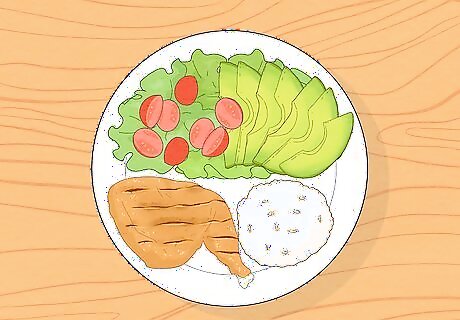
Add more whole foods to your diet. For effective weight loss, it's crucial to build a healthy, balanced diet incorporating various food groups. The quality of your food is more important than quantity, so try to cut out as many processed foods as possible. A balanced meal includes: 1/2 plate of fruits and vegetables 1/4 plate of whole grains 1/4 plate of lean protein
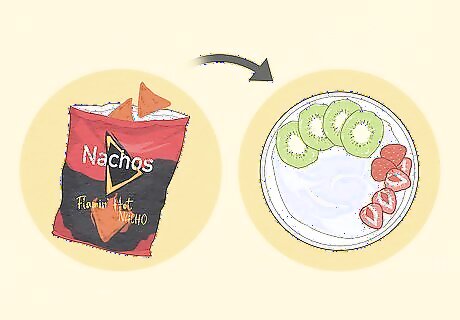
Replace “junk” foods with healthier alternatives. Calories are a critical component of weight loss, but it’s important not to deprive yourself. Instead of eliminating certain foods, choose more nutritious options with similar tastes. The next time you’re craving chips, replace them with veggies and hummus. If you're craving something sweet, eat frozen grapes or make banana ice cream. Other healthy snacks: mixed nuts, fruit, boiled eggs, yogurt

Eliminate alcohol and sugary drinks. If you're not careful, it's easy to drink all your calories for the day. One can of soda has up to 170 calories, so remove sugary drinks from your home if you are serious about losing weight. You can still enjoy the flavor of alcohol without the excess calories. Replace your drink of choice with a low-calorie mocktail, or try flavored sparkling water with lime. If you desperately need caffeine, drink yerba mate, green tea, or plain black coffee.
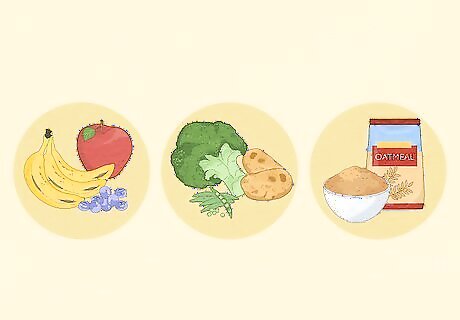
Eat high-fiber foods. Fiber is perfect for losing weight because it increases the feeling of being full. High-fiber foods absorb more water in the GI tract and take longer to digest, which also prevents you from over-snacking. High-fiber foods include: Fruits: apples, avocados, bananas, berries (blueberries, raspberries, strawberries) Vegetables: beans, broccoli, carrots, cauliflower, potatoes Whole grains: brown rice, oats, pasta Nuts (almonds, pistachios, sunflower seeds) Popcorn

Choose spicy foods. Spicy food contains capsaicin, which gives peppers their kick. It also increases the body’s ability to burn fat and energy, so add more spice to your diet to boost your metabolism. Hot sauce and packaged seasonings have a high salt content, so it’s best to add whole peppers or dried chili powder into your food instead. If you’re eating unhealthy foods, adding spice isn’t going to boost your metabolism. No matter how much spice you add, focus on maintaining a healthy, balanced diet of whole foods.
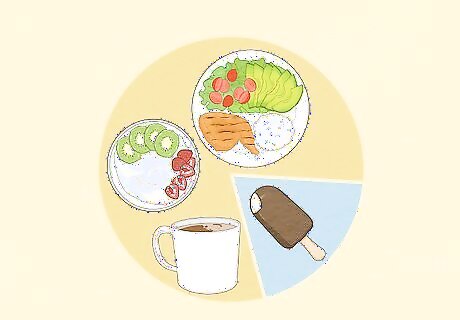
Practice intuitive eating. Don’t feel guilty for eating something sweet every once in a while: restricting certain foods only increases your cravings. It’s better to listen to your body than deprive yourself, but be mindful of how much you consume. Try the 80/20 rule: stick to nutritious, whole foods 80% of the time, and eat whatever you want 20% of the time. To avoid overeating, avoid distractions during meals, like watching TV or scrolling on your phone. Don't get so caught up with counting calories that you feel guilty for "giving in" to certain foods. Use an online calorie calculator to determine how many calories you need to cut, but always talk to your doctor to develop a specialized (and safe) weight-loss plan.
How are calories burned?
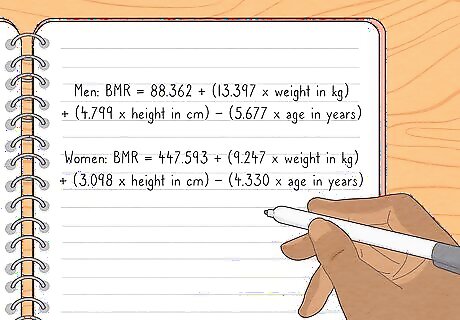
Your metabolism determines how many calories you burn. Metabolism is how your body converts food and drinks into energy. If you have a “fast” metabolism, you burn more calories during exercise and rest, which is a significant part of losing weight. Genetics impacts your metabolism, but exercising regularly and choosing healthy foods increases the number of calories you can burn. To figure out your minimum caloric intake, calculate your basal metabolic rate (BMR). Determine your height in centimeters and your weight in kilograms. Plug these values into an online calculator. A high BMR is ideal because it means you burn a lot of calories at rest. A low BMR means you have a slow metabolism, which is often fueled by restricting calories and limiting exercise. Calculate your BMR every week to track your metabolism. If your BMR remains the same, you may want to switch up your diet or workout. Then, check if your BMR changes the following week. BMR increases if you have a high percentage of lean muscle mass (since muscle is more active than fat). To boost your BMR, add muscle-building exercises into your routine, like weight-lifting or cycling.
Calculating Your Calorie Needs
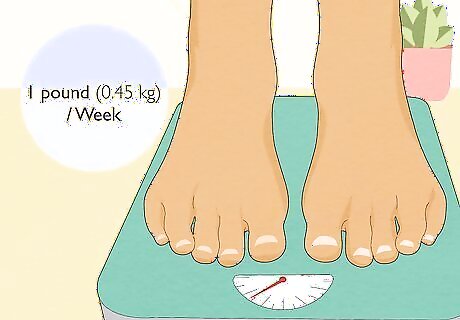
Calculate how many calories you need to eat to lose weight. In general, you need to burn 3500 calories to lose 1 pound (0.45 kg) of weight. Most people start by cutting 500 calories daily to lose one pound per week, but this amount will change as you lose weight. To burn 2000 calories, use an online calculator to determine how much you need to exercise and how many calories you need to cut. Mild weight loss: 0.5 pounds (0.23 kg) a week Normal weight loss: 1 pound (0.45 kg)a week Extreme weight loss: 2 pounds (0.91 kg) a week (not recommended unless advised by your doctor)


















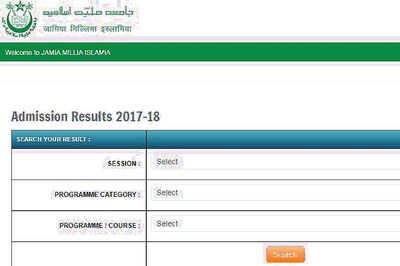

Comments
0 comment